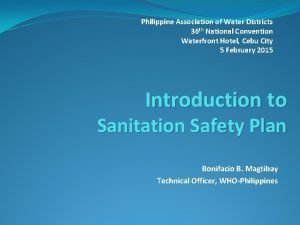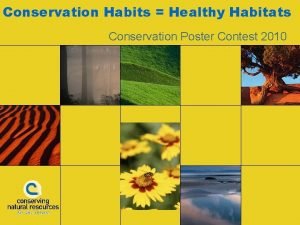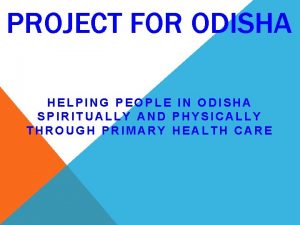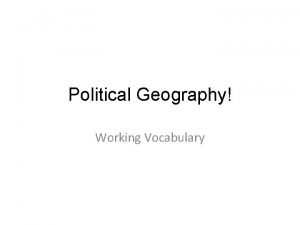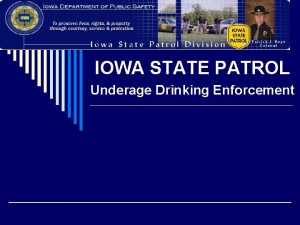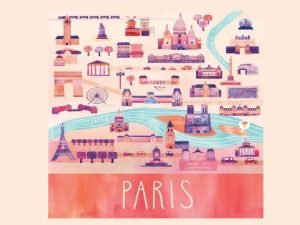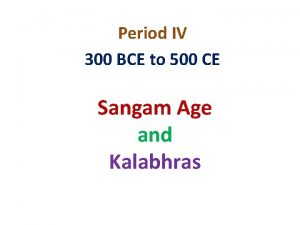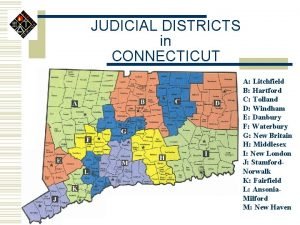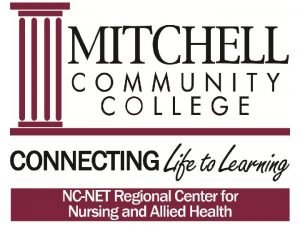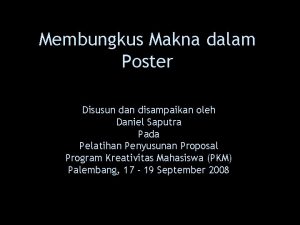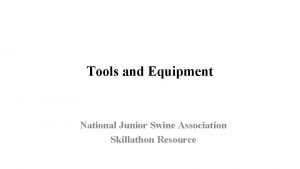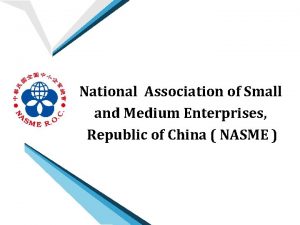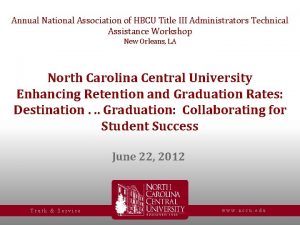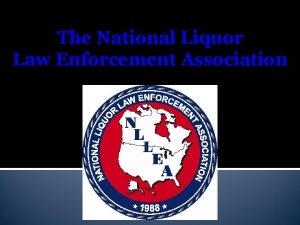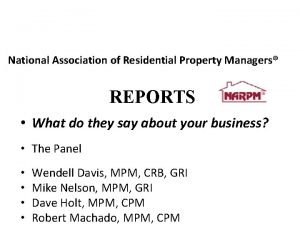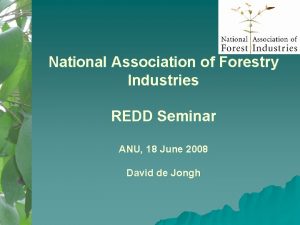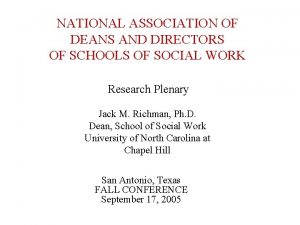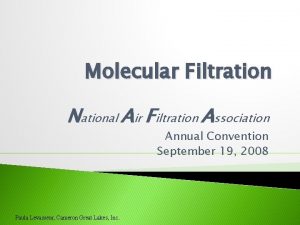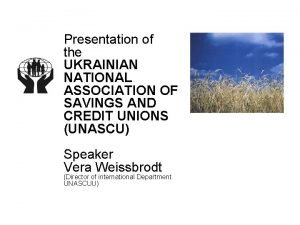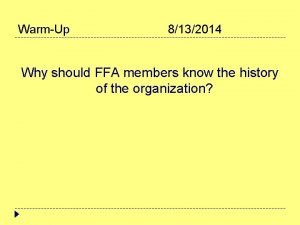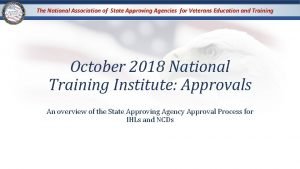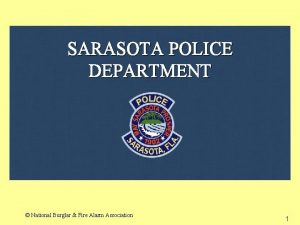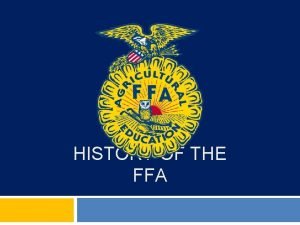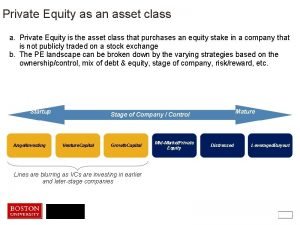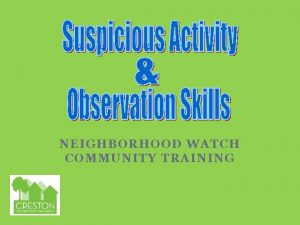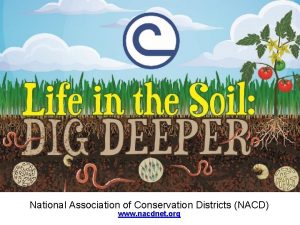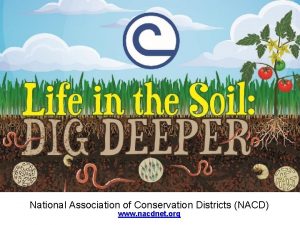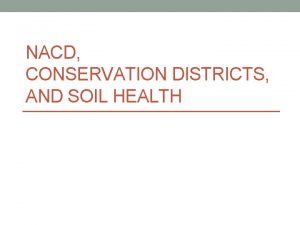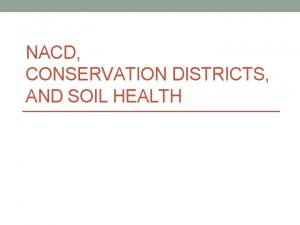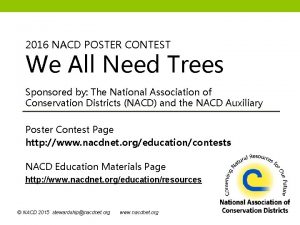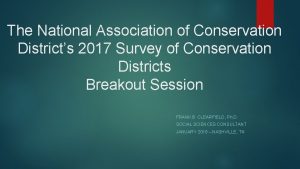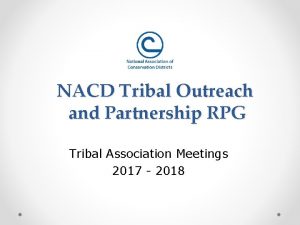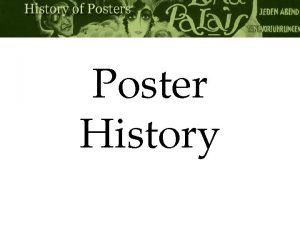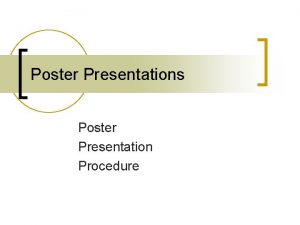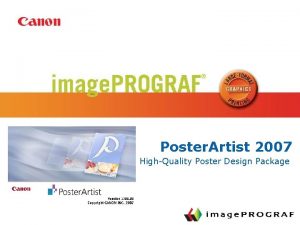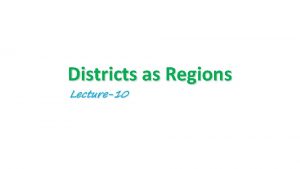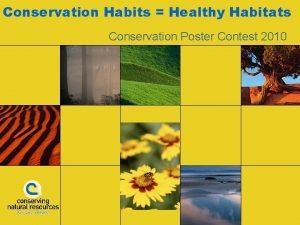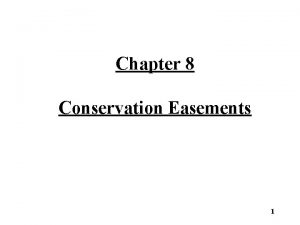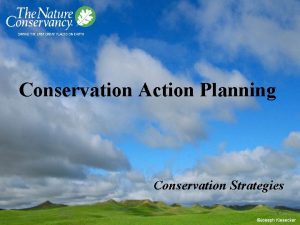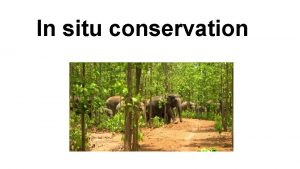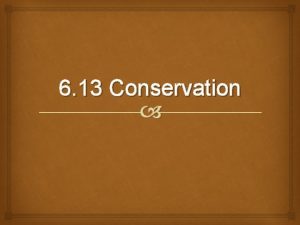National Association of Conservation Districts NACD 2012 Poster












































- Slides: 44


National Association of Conservation Districts (NACD) 2012 Poster Contest Theme And Stewardship Theme Soil to Spoon

Why do you need to know where your food comes from?

What kinds of food do you need to eat each day?

What do these foods have in common?

Fruits

Trace the apple back to the soil

Vegetables

Trace the corn back to the soil

Protein

Trace the beef back to the soil

SOIL

Grains

Trace the bread back to the soil

Dairy

Trace the milk back to the soil

Your school lunch

Food products in your community

Gardening and Edible Landscaping

Conservation and Your Food

What kinds of careers are related to food production and conservation of the land?

• ADD PICTURES FROM YOUR COMMUNITY • Examples: • Master Gardener or Junior Master Gardner programs, local farmers and ranchers, food processing business. Grain elevators, meat markets, etc.

What can you do to learn more about where your food comes from? 1)Talk to people in your community who are farmers or ranchers. 2)Talk to people who study soils. 3)Talk to FFA members. 4)Research topics about where your food comes from. 5)Talk to people who garden in your community.

2012 Soil to Spoon POSTER CONTEST

2012 Categories • Grades K-1 • Grades 2 -3 • Grades 4 -6 • Grades 7 -9 • Grades 10 -12

Theme Title for Your Poster Soil to Spoon Discuss and share your information with others!

FOR YOUR LOCAL, AREA, STATE OR ADDITIONAL INFORMATION ABOUT YOUR DISTRICT

Poster Ideas

Poster Ideas

Poster Ideas

What makes a good Poster? • Attracts attention • Is simple and clear • Uses colors and white space to get and hold attention • Letters are large enough to be easily read

When forming ideas for your poster • Research the topic of theme • Brainstorm ideas and make a list • Use theme as your title Soil to Spoon

Tips to remember • • Don’t use too many words Use a combination of illustrations and words Be as neat as you can Blend colors when using crayons or colored pencils • Depending on design leave white space on the poster • Make sure the poster is balanced

Tips to remember Choose colors carefully. Note the following general guidelines: • - Black tends to be more formal, neat, rich, strong • - Blue is cool, melancholy • - Purple is considered royal, rich • - Yellow tends to be warm, light, or ripe • - Green is fresh, young, or growing • - White means clean, and neat • -Red attracts the eye, is high energy • - Orange attracts the eye

Tips to remember • Don't try to include too many ideas or activities on your poster. • A single message, clearly illustrated, is more effective.

Things you should not do • Cover poster with lamination or other clear covering. (Clear covering is OK if chalk type materials) • Use staples, tacks, or tape. • Use fluorescent posters. • Create a poster that is all words or a poster that is all pictures.

Steps to follow when making a poster • Decide on information to include on the poster. • Research theme topic. • Sketch out your idea. • Mark guidelines for lettering. (lightly) • Clean up the poster so it is neat. Erase any guidelines that are showing.

Steps to follow when making a poster • Turn poster in on time for judging. • Attach poster entry form on the back and be sure it is signed by a parent or guardian. • Entry must be contestant's original, hand done creation and may not be traced from photographs or other artists' published works.

Steps to follow when making a poster • Any media may be used to create a flat or two-dimensional effect (paint, crayon, colored pencil, charcoal, paper or other materials). • Poster size must be between 8. 5" x 11" and 22" x 28". Or the size required by your local or state contest.

What your poster will be judged on • • Conservation message— 50 percent Visual effectiveness— 30 percent Originality— 10 percent and Universal appeal— 10 percent

FOR YOU TO ADD LOCAL, AREA, STATE INFORMATION ON DATES AND OTHER CONTEST INFORMATION

• Visit http: //www. nacdnet. org/education/resources/ For additional information on NACD Education Material on Forestry Habitat, Soil and Water Teachers guide Student booklets and more……………. .

Speech • Add information if you also hold a speech contest on the stewardship theme • Date of Speech contest • Open for grades • Length of speech • Contact Information

Essay • Add information if you hold an Essay contest on the Stewardship theme. • Contest open to grades: • Essay length: • Due Date: • Essays entries are to be sent to: • Contact Information
 Philippine association of water districts
Philippine association of water districts Conservation habits
Conservation habits Texas recapture districts
Texas recapture districts Texas recapture districts
Texas recapture districts Sharecropping and tenant farming venn diagram
Sharecropping and tenant farming venn diagram Maine public health districts
Maine public health districts Texas recapture districts
Texas recapture districts Colorado springs school districts
Colorado springs school districts East odisha districts
East odisha districts Define delimit demarcate administrate
Define delimit demarcate administrate Zoning districts
Zoning districts Maharashtra district in 1960
Maharashtra district in 1960 Data driven district
Data driven district Voting districts definition ap human geography
Voting districts definition ap human geography Arizona congressional districts
Arizona congressional districts Iowa state patrol districts
Iowa state patrol districts Russia federal districts
Russia federal districts From where does katniss recognize the girl with red hair
From where does katniss recognize the girl with red hair Maine public health districts
Maine public health districts Paris is divided into 20
Paris is divided into 20 Sri lanka and tamil nadu map
Sri lanka and tamil nadu map Connecticut judicial districts
Connecticut judicial districts Category 5 and 6 local authority districts
Category 5 and 6 local authority districts National patient safety goals 2012
National patient safety goals 2012 Pesan yang disampaikan dalam poster biasanya melalui
Pesan yang disampaikan dalam poster biasanya melalui Swine sorting tools
Swine sorting tools National association of patent practitioners
National association of patent practitioners National association of small and medium enterprises
National association of small and medium enterprises National association of hbcu title iii administrators
National association of hbcu title iii administrators National liquor law enforcement association
National liquor law enforcement association National association of residential property managers
National association of residential property managers National association of forest industries
National association of forest industries National association of deans and directors
National association of deans and directors Catholic nurses
Catholic nurses National air filter association
National air filter association Ukrainian national association
Ukrainian national association National association of catholic nurses
National association of catholic nurses National association of special education teachers
National association of special education teachers Jan eberly ffa facts
Jan eberly ffa facts National association of state approving agencies
National association of state approving agencies National burglar and fire alarm association
National burglar and fire alarm association Ffa emblem parts
Ffa emblem parts National fire protection association
National fire protection association Private equity as an asset class
Private equity as an asset class National sheriffs association
National sheriffs association
